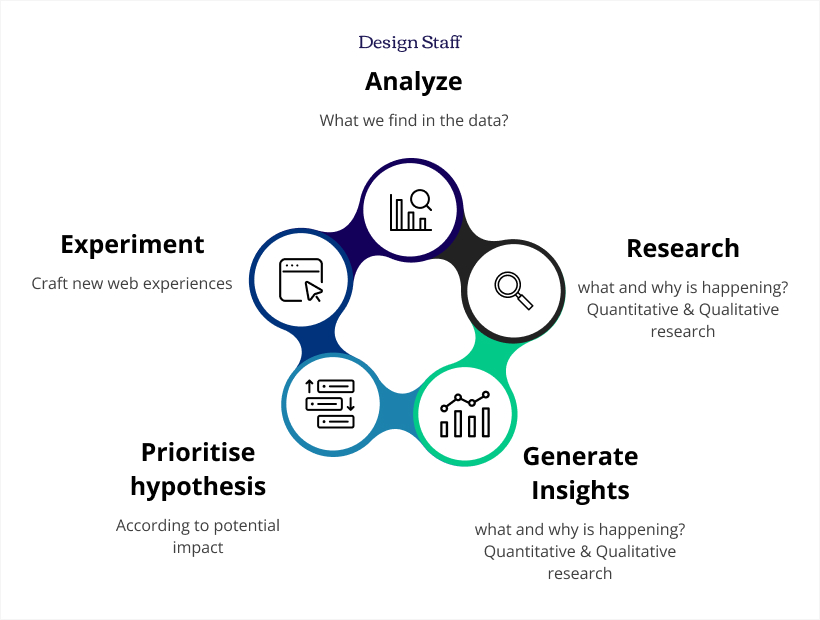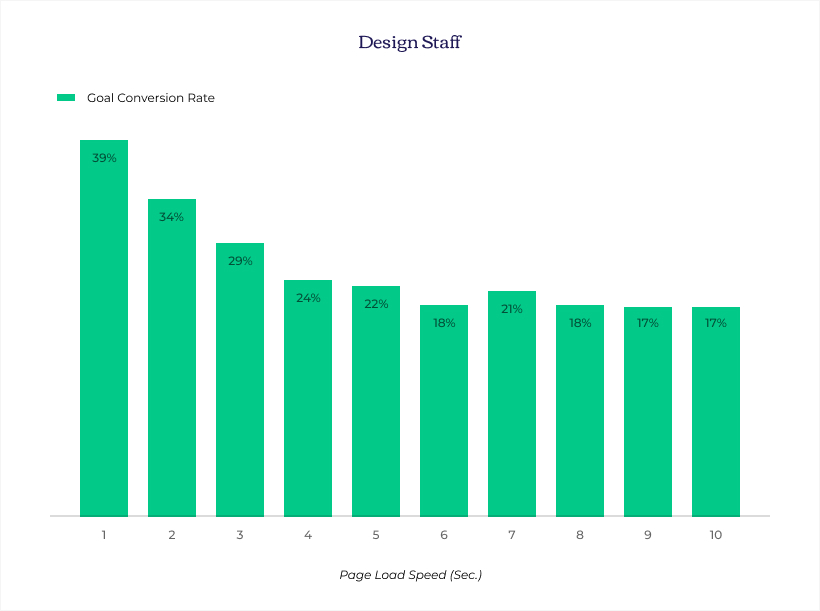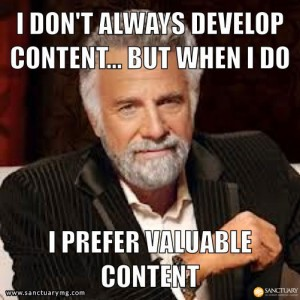As a business owner, your life involves overcoming challenges.
Running an efficient website is arguably the most important aspect of business operations these days. When you’re just starting, budgetary constraints may force you to DIY your company website.
WordPress is the world’s most popular website builder – and they market their product as a platform where anybody can create a polished site. When push comes to shove, this is only partly true.
Anyone can get a WordPress site up and running – this is true. But creating a website that resonates with target customers, gets placed on relevant Google searches, and earns sizable revenue takes an expert’s touch.
If everyone could create a high-performing website on WordPress, there wouldn’t be web design & development agencies.
A decent portion of our clients have tried to DIY their web design project, only to run into a few crucial challenges. If you are thinking of building your business website by yourself, here are the seven biggest obstacles you’ll probably run into.
1. User Experience
This is – without a doubt – the most significant of all the web design challenges you’ll run into.

Creating a website with a strong user experience (UX) requires a professional understanding of the target visitor’s needs, objections, behaviors, and so on. This forms the foundation of the site’s navigation and architecture – and is crucial to incorporating interactive elements into the website.
Trust us, user experience (UX) design – on both desktop and mobile devices – is a big challenge even for seasoned web designers.
Simply put, a seamless user experience means you have an awesome website (and vice versa). Professional web designers have years of schooling and experience in UX principles. When you hire an expert designer, they will make sure these are properly implemented into your site with responsive web design.
2. Conversion Rate Optimization (CRO)
A “conversion” happens when a user on a website completes the intended action of a particular webpage.
Conversions are the primary goal of nearly every website. For example, if you are a law firm, the ideal conversion would be someone visiting the website and booking a consultation.
The number of conversions your website gets will vary month after month. In some cases, the number may be well below the monthly goals you set – and your website will need conversion rate optimization (CRO).
This process involves a deep dive into the web pages to understand what’s turning both desktop and mobile users off – and making proper changes to get things trending in the right direction.

Understanding which changes or updates are needed is not always black and white.
You’ll need to analyze the site’s data and do some creative problem-solving to make the right tweaks. On a basic level, this calls for advanced tools – as well as the skillset to test and refine the site modifications.
Ongoing conversion rate optimization is simply part of running a website. As a business owner with limited experience, CRO will likely be one of the biggest web design challenges you’ll face. This is where a professional web design agency will be most beneficial.
3. Scaling the Website
When your business grows, your website will need to grow with it.
As the business scales, the major web design challenges will involve accommodating an uptick in website traffic, integrating new features/programs, and managing a larger volume of content.
Most importantly, you will need to make sure the changes do not impact your page loading speeds. This will become extremely difficult as you add new functionalities.
Site visitors have an infamously low tolerance for slow-loading websites. If it takes longer than a second or two for a page to load, most visitors will have no issues going to your competitors.
Studies have found that conversion rates are nearly 40% higher on websites that load in one second or less.

The most important factor in scaling a website comes down to a database architecture designed to manage larger sets of data – which should ideally be accounted for in the initial website build. When you work with a skilled design and development firm, they will make sure your site is properly set up to avoid these web design challenges down the line.
4. SEO and Web Design
Search engine optimization – or SEO – and website design go hand-in-hand. When people search for your product and/or services on Google, you want to show up as close to the top as possible.
For example, if you offer talent management services in New York, your website should be set up to get placed on Google searches for talent managers in NYC, talent management firms in New York, and so on.
SEO is grouped into three categories: on-page SEO, off-page SEO, and technical SEO. Some of the basic SEO tasks in every website build include:
- Keyword research and proper usage (on-page SEO)
- High-quality content (on-page SEO)
- Responsive website design (technical SEO)
- Citation building (off-site SEO)
- Google My Business profile setup & management (off-site SEO)
- Fast page load time (technical SEO)
- Proper HTML tags (technical SEO)
- Intuitive site structure and navigation (technical SEO)
Becoming proficient in SEO isn’t something most people can do in an afternoon or a free weekend – it takes years of experience. This is why most designers – or web design agencies – work closely with an SEO specialist during the site build.
SEO is one of the biggest web design challenges that business owners run into. If your site isn’t built within best practices, it will struggle to gain web traffic.
5. Copywriting and Ongoing Content Management

Without expert copywriting (text), websites are just a blur of images and color schemes.
Professional copywriters tend to make this crucial task look easy.
Anyone can type words on a page – but it takes a seasoned expert to create copy that properly conveys information and evokes action from visitors. This job requires a critical understanding of language, human emotions, SEO best practices, and how to supplement design elements with words.
In addition to writing web pages, you’ll need to consistently contribute educational content (like blogs and guides) and make updates to maintain user interest. Creating professional content is a massive web design challenge for business owners – and it takes up A LOT of time.
At Design Staff, we get a lot of clients who insist they can write their own content. After a couple of months, there never seems to be enough time in the day – and they end up falling behind or delivering unusable text.
When you work with a reputable web design agency or partner, they will make sure you have professionally written site content, the right Content Management System (CMS) is being used, and everything is written to reflect your brand voice & resonate with target customers.
6. Accessibility
Web accessibility has been a trending topic for a few years now.
It used to be a flashy web design bonus. Now, it’s a requirement for many industries under the Americans with Disabilities Act. In a nutshell, web accessibility is about making sure everyone – which includes people with disabilities – can properly interact with your website.
On a basic level, web accessibility involves:
- Adding alt tags for images for visually impaired users
- Providing sufficient color contrast for color-blind users
- Incorporating keyboard navigation options

Not all businesses are required to have an accessible website. However, there is no reason not to make your site accessible. By doing so, you are improving the user experience, boosting SEO, and potentially reaching a larger audience.
It’s safe to say that most novices do not understand the components of web accessibility and ADA compliance. A professional designer and developer will make sure these principles are properly integrated while the site is being built.
7. Keep Up with Trends
Trends come and go online – and keeping a website in line with them is one of the biggest web design challenges for business owners.
Your website is the online face of your company. The last thing you want is the dreaded “outdated” look. The thing about web design trends is they change so frequently that it’s tough for the untrained eye to notice.
To put things in perspective, take a look at the homepage evolutions of some top brands. You’ll be amazed how outdated layouts look from just a few years ago.
Staying on top of modern web design trends is a job that never sleeps. It calls for ongoing research, experimentation, creativity, and data analysis. Incorporating trends and making updates typically requires skills that are beyond most business owners.
Attempting to make changes without the right expertise could potentially harm your site’s user experience. Additionally, it’s important to understand that not all trends will be a fit for your business website. When you work with a professional web designer, they will decipher the trends and implement the ones that will benefit you the most.
Start the Conversation Today
Owners of small companies are typically working on a shoestring budget. DIYing a website might seem like the only feasible option – we get it.
However, it’s important to understand the nature of the web design challenges you’ll face along the way. An unoptimized business website can have many negative long-term effects. If you’re going to invest in anything, we recommend a professional site build.
If you’re dealing with budgetary constraints, be open about it with a web designer. Most are accommodating and know how to stretch a budget.
The first step is scheduling a website consultation.
At Design Staff, we specialize in creating responsive websites with expert web design, development, copywriting, and SEO for the complete package. No matter what your challenges look like, we’re confident we can meet your needs.



